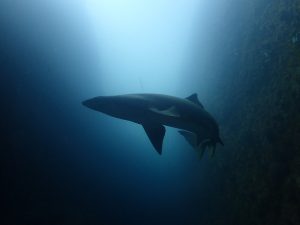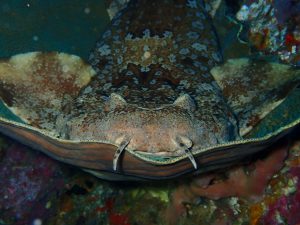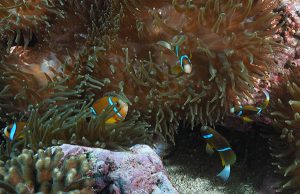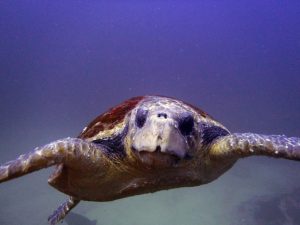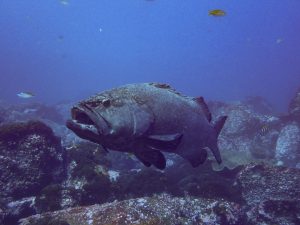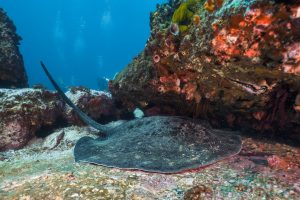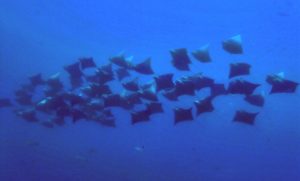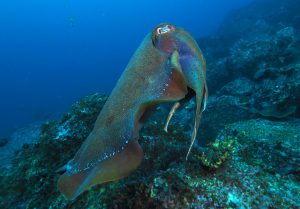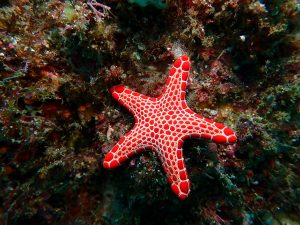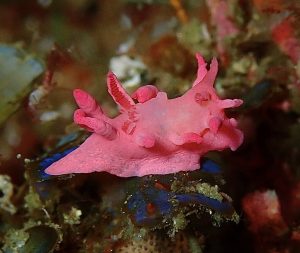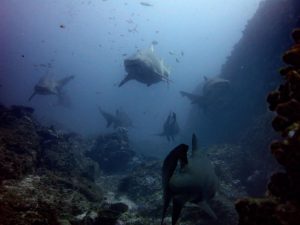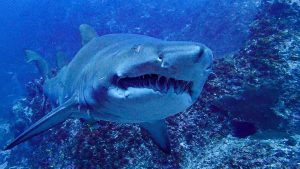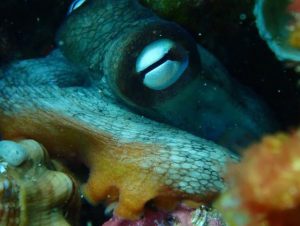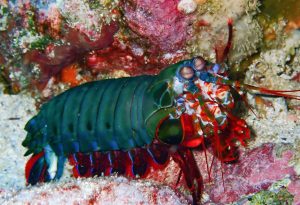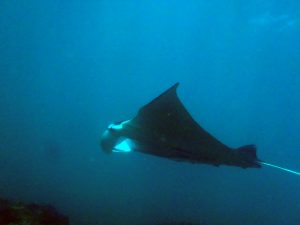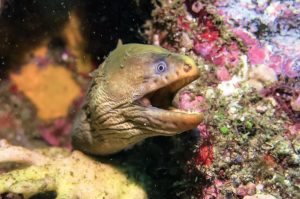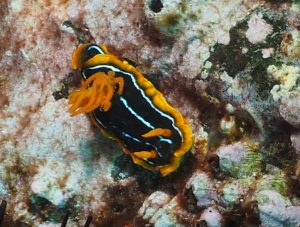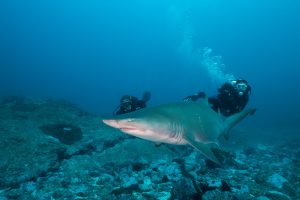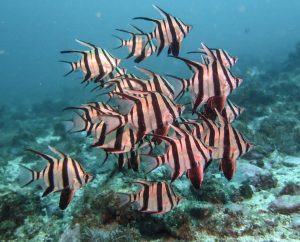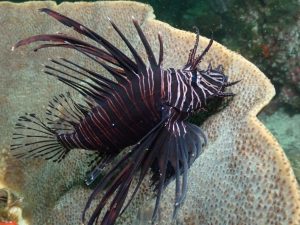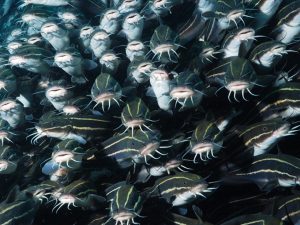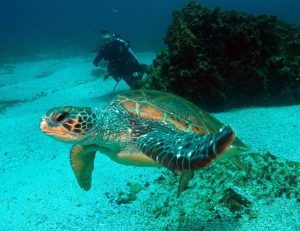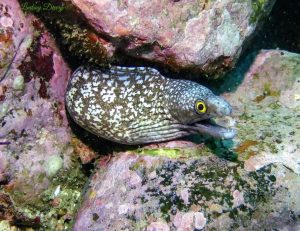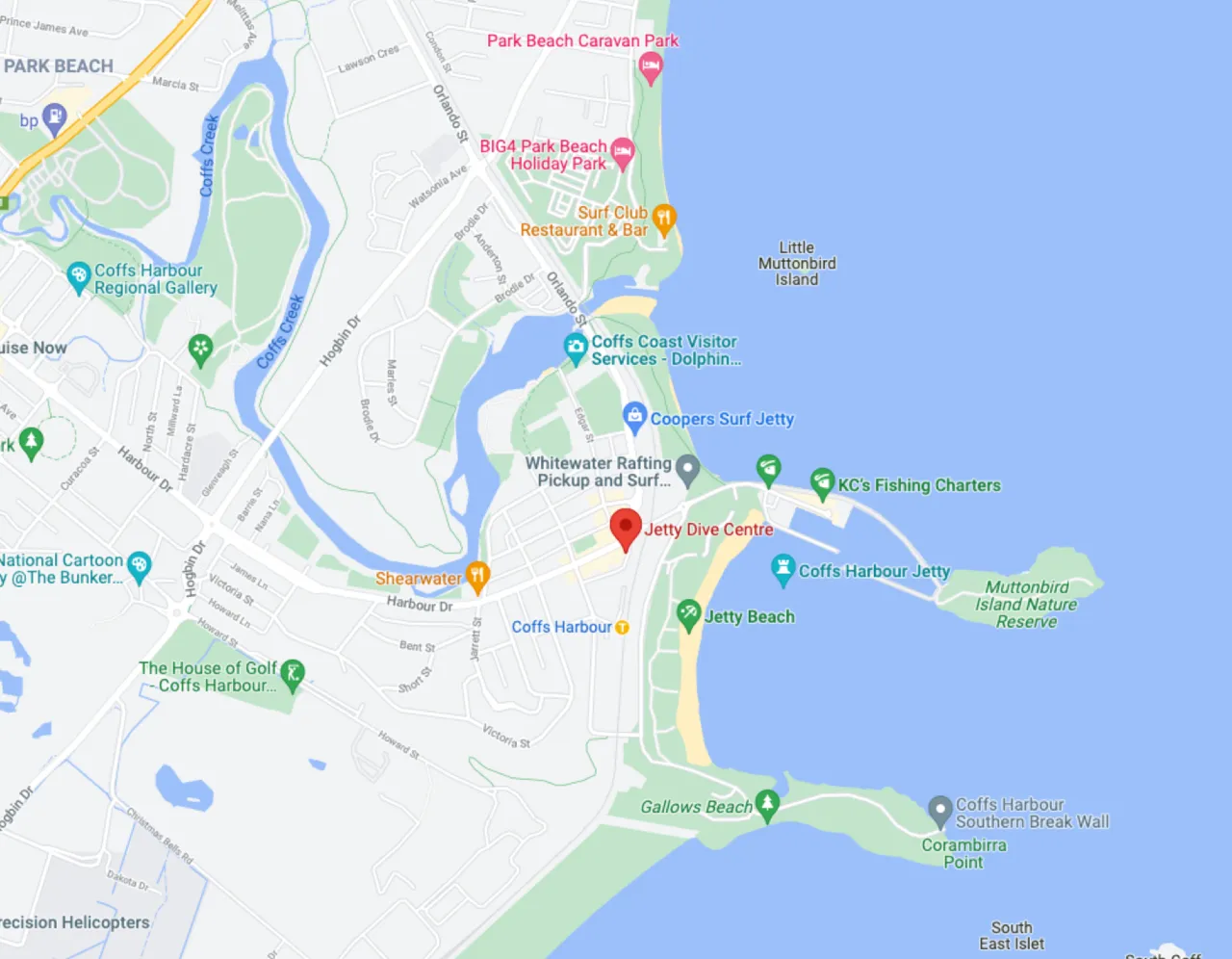Solitary Islands Marine Park
Jetty Dive Centre is ideally located at the gateway to the Solitary Islands Marine Park. All our tours and charters leave from the Coffs Harbour marina into the Park.
The Solitary Islands Marine Park extends along about 75km of coastline from Coffs Harbour to Sandon River on the NSW North Coast. Established in Jan 1998, it’s been a Marine Reserve since 1992. (more info can be sourced about the Solitary Islands Marine Park on Department of Primary Industries website (find this here!).
The Solitary Islands Marine park is very unique. The East Australian Current from the North brings Tropical fish-life meeting cooler currents from the south, which allows both tropical and temperate life to thrive. Over the years that we have operated (since 1996) we have seen the fish-life change and improve, especially the non-targeted fish species.
The Solitary Islands Marine Park is in the midst of the local Aboriginal communities the Gumbaynggirr Nation and Yaegl Nation. These communities have strong cultural links with the marine park and are actively involved in conservation planning.
Zones
“Within the park there are different Zones. The zones depict aim to conserve marine biodiversity while providing for a range of uses including beach activities, swimming, surfing, charter and recreational fishing, commercial fishing, scuba diving, sailing, boating, research and other activities.”
The zones restrict particular activities in particular areas. South Solitary Island has a sanctuary zone around parts of it, which means that only permitted activities are those that do not involve harming any animal, plant or habitat.
We have taken the responsibility to ensure the Marine Life and Habitat of the Sanctuary Zones are upheld. We have strict guidelines to follow with our divers and snorkelers, and we pass these strict guidelines onto all of our customers and visitors.
Because of this, the sanctuary zones are brimming with beautiful sea life. There is an abundance of beauty in the waters we dive in, which we correlate directly to the benefits of the Sanctuary Zone.
Find below some details sourced from the Department of Primary Industries website detailing some threatened and protected species within the marine park.
What can you see in the Solitary Islands Marine Park?
The different species we find in the Solitary Islands Marine Park are a mixture of tropical fish from the Great Barrier reef and Sub-tropical fish from Sydney to southern Australia.
Too numerous to name here, we see all manner of sea life from fish to sharks, turtles to cuttlefish, sea stars to rays, and macro life a plenty!
We have an excellent page called Solitary Islands Fish ID where you can look at what we see (or identify what you have seen!).
What You’ll See
Threatened and Protected Species
While the marine park helps to conserve all marine species occurring naturally in the region. Emphasis is also given to conserving species that are threatened, protected or endemic.
Threatened and protected species include the Grey Nurse shark, Black Cod, Turtles, Whales and Shore birds.
The Marine Park contains significant habitat for the endangered Grey Nurse shark.
- North Solitary Island and South Solitary Island are listed as aggregation sites. “Manta Arch” at South Solitary Island is a popular site with our Dive tours, for viewing the Grey Nurses.
- Smaller numbers of sharks are regularly observed at Groper (South West Solitary) Island and Split Solitary Island.
- The sharks also aggregate at Pimpernel Rock in the Solitary Islands Marine Reserve (Commonwealth waters).
North Solitary Island holds the east coast’s most important breeding site for the regionally endemic broad-banded anemonefish.
Three sea turtles are regularly recorded in the park:
- the green turtle (Chelonia midas);
- loggerhead turtle (Carretta carretta);
- hawksbill turtle (Eretmochelys imbricate).
The common and bottlenose dolphins live in the park throughout the year.
Marine Life
Researchers have identified over 530 species of reef fish in the park.
- More than half are primarily tropical, about 13% are subtropical and 10% are primarily temperate. The others are tropical–subtropical or subtropical–temperate.
- More than 30% are endemic to Australia – meaning they are not found anywhere else. Of these, about 12% are found only on the east coast, and 5% only on the subtropical east coast.
The rocky reefs support:
- 91 hard coral species, which form unique communities of tropical, subtropical and temperate species;
- reef-associated fish, including snapper, tusk-fish, blue morwong and pearl perch;
- Pelagics, including kingfish.
Also living in the reefs are:
- more than 700 molluscs (shelled animals like shellfish, nudibranchs and cuttlefish);
- crustaceans (crabs, rock lobsters and shrimps);
- echinoderms (urchins and seastars);
- marine worms.
At least 35 shark and ray and 30 marine mammal species have been recorded in the Marine Park.
More than 120 coastal and marine bird species are found in the region too.
Other nationally significant marine mammals recorded in the region include:
- the: humpback whale;
- southern right whale;
- sei whale;
- fin whale;
- blue whale;
- dusky dolphin.
- Humpback whales are regularly seen in June and July as they travel to winter breeding grounds off Queensland, and between August and September when they return south.
- The whales often pass relatively close to the coast, particularly near prominent headlands.
Some of these species, including whales, some sharks and some seabirds, have very large home ranges that stretch well beyond Marine Park boundaries.
The Park can protect feeding, resting or breeding sites that may be seasonally important for such species and can manage threats to their wellbeing or survival in the park.
Cultural Heritage
Aboriginal heritage
The local Aboriginal communities within the Gumbaynggirr Nation and Yaegl Nation have strong cultural links with the Marine Park and are actively involved in planning its conservation.
The Gumbaynggirr people are the traditional owners of the land and sea in central and southern section of the park, with some overlap with the Yaegl people in the northern section.
Several Elder groups live adjacent to and use the marine resources from the park, including:
- the Birrigan Gargle Elders (generally north from the Wooli Wooli River);
- Garby Elders (generally Minnie Water to Moonee Creek, known as Munim-Munim by the Gumbaynggirr people);
- Garlambila Guuya Girrwaa Elders (generally south of Moonee Creek ).
Important sites for collecting marine plants and animals include Coffs Creek, Park Beach, Arrawarra Headland, Corindi River, Corindi Beach and rock platform, and the Sandon River.
Sites within the marine park have been used for thousands of years for resource use, cultural gatherings and storytelling and are still very significant to Aboriginal communities.
Visit Yarrawarra for more information.
See the Aboriginal engagement and cultural use of fisheries resources policy for more information.
Maritime heritage
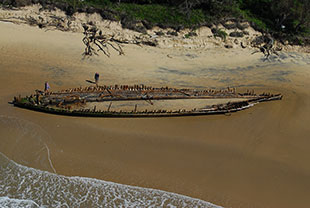
Captain Cook named the Solitary Islands in 1770 during his voyage along Australia’s east coast in HM Bark Endeavour.
The Solitary Islands are rich in maritime history and many ships have been lost in or near the area, especially during the 1800s.
- The location of most wrecks is known, though only a few are visible.
- Eighteen recorded wrecks lie within or near the park.
- The earliest ship wrecked was built in 1841 and the latest in 1928.
- The Keilawarra, built in 1878, was carrying passengers when it hit the Helen Nicholl near North Solitary Island in 1886. More than 40 lives were lost. The Keilawarra was found in 2000 near North Solitary Island in about 70 m of water.
- The Buster, which lies on Woolgoolga Beach near the mouth of Woolgoolga Lake, is the only wreck in the park that is visible from an accessible location.
- Pieces of Lady of Lorne are also visible in Moonee Creek.
A shipwreck becomes historic after 75 years and is protected under the NSW Heritage Act 1977 and the Commonwealth Historic Shipwrecks Act 1976.
The lighthouse at South Solitary Island – considered the most isolated on the NSW coast – began operating in March 1880.
A school education program to raise awareness and appreciation of local maritime history began in 2007.
Sourced from the Solitary Islands Marine Park information on Department of Primary Industries website (find this here)
